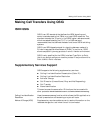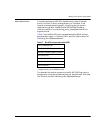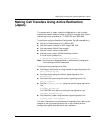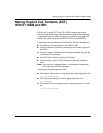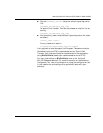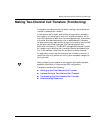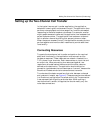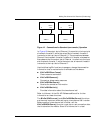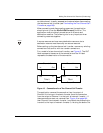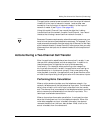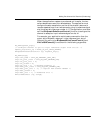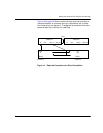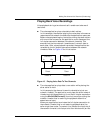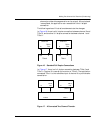
Making Two-Channel Call Transfers (Tromboning)
November 2009 191
Setting up the Two-Channel Call Transfer
In the typical two way call transfer application, the application
detects an incoming call and answers the call. The application then
performs voice playback and voice recognition functions as needed,
responding to the caller's spoken utterances. For example, a caller
might speak someone's name and the application then accesses that
person's phone number. The application then makes an outbound
call on another channel by dialing that person's phone number.
When the person answers the call, the application connects the two
parties together and monitors both resources to provide additional
functionality.
Connecting Resources
To create the two-channel call transfer and perform the required
additional functionality, the application must connect various
hardware resources. These resources are network timeslots for a
T1/E1 phone line or channels. Each resource has an input slot and
an output slot. When connecting two resources together, one
resource must be defined as the source and the other resource
defined as the destination. The application should define the
connection type between the two resources as “transmit” because the
Brooktrout hardware maintains connections as transmits.
To understand the basic connections that exist between a channel
and a network timeslot, see Figure 12. These connections are defined
in a Brooktrout configuration file called callctrl.cfg. The connection
lines represent both signaling and voice data. When making a
two-channel call transfer, the application should modify only the
voice data connections.




